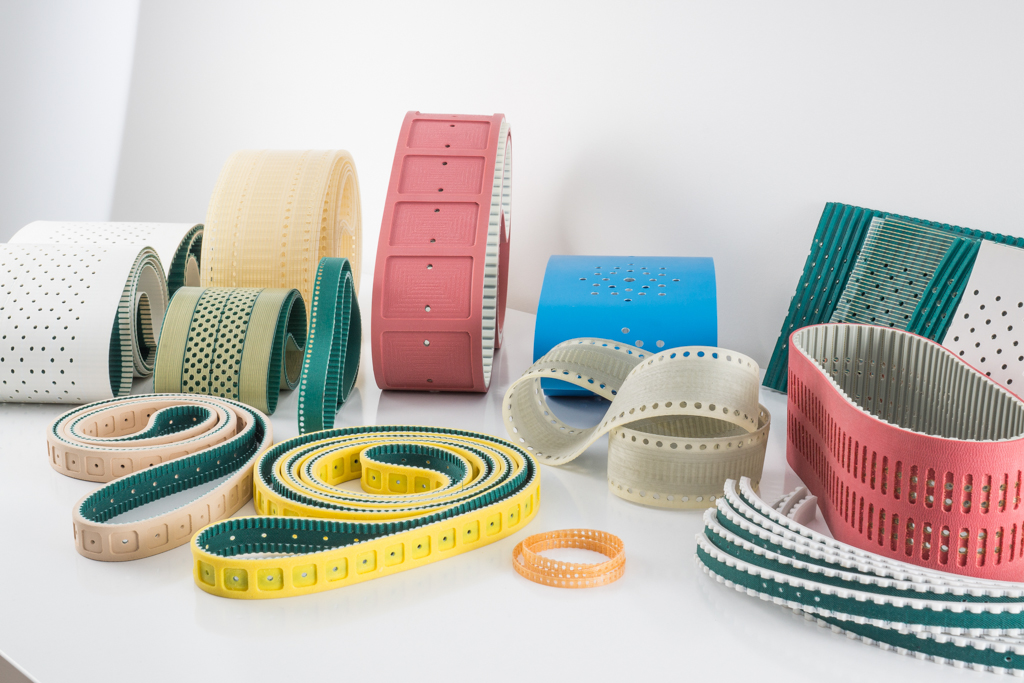Industrial belts have played a crucial role in the advancement of manufacturing and industrial processes, enabling the efficient transfer of power and motion. These mechanical devices, which are essential in various applications, have evolved significantly over the years. Here’s a brief history of industrial belts and their impact on the industry.

Early Beginnings: Leather Belts and Line Shafting
The origins of industrial belts can be traced back to the early days of the Industrial Revolution in the late 18th and early 19th centuries. During this period, factories were powered by water wheels and steam engines, and the need for efficient power transmission systems became paramount. Leather belts were among the first solutions to this problem. They were used in conjunction with line shafting systems to transfer power from a central source, such as a steam engine, to various machines within a factory.
Leather belts, although effective, had several limitations. They were prone to stretching, slipping, and wear, which necessitated frequent maintenance and replacement. Despite these drawbacks, they remained the primary choice for power transmission well into the late 19th century.
The Rise of Rubber and Fabric Belts
The invention of vulcanized rubber by Charles Goodyear in 1839 marked a significant turning point in the development of industrial belts. Vulcanization improved the durability and elasticity of rubber, making it an ideal material for belts. Rubber belts quickly gained popularity due to their superior performance compared to leather belts. They offered better grip, reduced slippage, and required less maintenance.
In the early 20th century, fabric-reinforced rubber belts emerged as a further improvement. These belts combined the strength and flexibility of rubber with the added durability provided by fabric reinforcements. The combination resulted in belts that could handle higher loads and speeds, making them suitable for a wider range of industrial applications.
The Advent of V-Belts
The development of V-belts in the 1920s revolutionized power transmission. V-belts, named for their trapezoidal cross-section, provided several advantages over flat belts. Their design allowed for greater surface contact with pulleys, resulting in improved grip and reduced slippage. Additionally, V-belts were more efficient at transmitting power and could operate at higher speeds and loads.
The introduction of V-belts led to increased efficiency and reliability in industrial machinery. They quickly became the standard for many applications, from automotive engines to agricultural equipment and beyond.
Modern Innovations: Synchronous and Timing Belts
The latter half of the 20th century saw further advancements in industrial belt technology with the development of synchronous belts, also known as timing belts. These belts featured teeth that meshed with corresponding grooves on pulleys, ensuring precise and synchronous power transmission. Timing belts eliminated slippage entirely, making them ideal for applications requiring accurate timing, such as in internal combustion engines and conveyor systems.
Modern industrial belts are made from a variety of advanced materials, including synthetic rubbers, polyurethane, and high-strength fibers like Kevlar. These materials offer improved durability, flexibility, and resistance to environmental factors such as heat, chemicals, and abrasion.
The Future of Industrial Belts
Today, industrial belts continue to evolve, driven by the demands of modern manufacturing and automation. Innovations in materials science and engineering are leading to the development of belts with even greater performance characteristics. For instance, carbon fiber-reinforced belts are being used in high-performance applications where strength and weight are critical factors.
In addition to material advancements, the integration of smart technologies is also on the horizon. Smart belts equipped with sensors can monitor their own condition and performance in real-time, providing valuable data for predictive maintenance and reducing downtime.
Conclusion
The history of industrial belts is a testament to human ingenuity and the relentless pursuit of efficiency and reliability in manufacturing. From the early leather belts of the Industrial Revolution to the advanced, high-performance belts of today, these mechanical devices have played a pivotal role in powering the progress of industry. As technology continues to advance, industrial belts will undoubtedly remain a cornerstone of modern manufacturing, driving innovation and efficiency for years to come.
